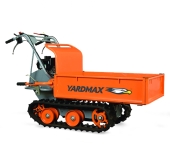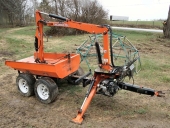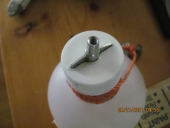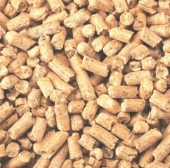
 3
3




Aim High. Fail Small.
Repeat.




Support Ant Village Lot Efforts On Narrow Pond
Respect your superiors...if you have any. Mark Twain
 1
1




'Theoretically this level of creeping Orwellian dynamics should ramp up our awareness, but what happens instead is that each alert becomes less and less effective because we're incredibly stupid.' - Jerry Holkins




Orin Raichart wrote:
....I'm thinking the conveyor belt needs to be able to swing in a 180 degree arc (or atleast a 90) so maybe put a wheel on the delivery end of the conveyor and side handles on both left and right sides to pull/push the delivery end across the roof top.
...this means the end where the dirt is loaded needs to be pin hinged.
....it would be nice to be able to easily move the conveyor forward and backward while running (that or a extendable trough on the delivery end which can move forward and backwards by hand.
Aim High. Fail Small.
Repeat.
 1
1




D Nikolls wrote:
If you're moving material a fair ways, though, it seems like it might get cost prohibitive pretty quickly? And, if you wish to spread the material, a vehicle can place a bunch of loads near each other, without any reconstruction of the conveyer setup to change the aim...
Aim High. Fail Small.
Repeat.





Some places need to be wild
 4
4




How permies.com works
What is a Mother Tree ?










 1
1




Some places need to be wild
 1
1




A human being should be able to change a diaper, plan an invasion, butcher a hog, conn a ship, design a building, write a sonnet, balance accounts, build a wall, set a bone, comfort the dying, take orders, give orders, cooperate, act alone, solve equations, analyze a new problem, pitch manure, program a computer, cook a tasty meal, fight efficiently, die gallantly. Specialization is for insects.
-Robert A. Heinlein










 1
1




Some places need to be wild
 1
1




Eric Hanson wrote:
I am trying to think about negatives, and all I can come up with is would this be a one time application or do you have other plans for the conveyor?
....
My only concern is that this would work great for your berm application, but afterwards become a lawn ornament.
Aim High. Fail Small.
Repeat.




Chris Kott wrote:
One parting thought just struck me (ouch): I know that one of the benefits of accessories with their own on-board electrical motors involves the doing away with much of the mechanisms that raise or lower the RPMs of the PTO, but I wonder if anyone is making something like an electric tractor with an electric PTO to work with all the conventional machinery. I mean, if you had, as was just mentioned, an old hay conveyor, all you need is the power.
-CK
Aim High. Fail Small.
Repeat.




Eric Hanson wrote:BTW,
I just ran some numbers and it will take 2000 watts (2 Kw) to raise one metric ton two meters.
Aim High. Fail Small.
Repeat.
 2
2




Aim High. Fail Small.
Repeat.




A human being should be able to change a diaper, plan an invasion, butcher a hog, conn a ship, design a building, write a sonnet, balance accounts, build a wall, set a bone, comfort the dying, take orders, give orders, cooperate, act alone, solve equations, analyze a new problem, pitch manure, program a computer, cook a tasty meal, fight efficiently, die gallantly. Specialization is for insects.
-Robert A. Heinlein
 7
7




How permies.com works
What is a Mother Tree ?
 2
2




Aim High. Fail Small.
Repeat.




A human being should be able to change a diaper, plan an invasion, butcher a hog, conn a ship, design a building, write a sonnet, balance accounts, build a wall, set a bone, comfort the dying, take orders, give orders, cooperate, act alone, solve equations, analyze a new problem, pitch manure, program a computer, cook a tasty meal, fight efficiently, die gallantly. Specialization is for insects.
-Robert A. Heinlein
 3
3




Aim High. Fail Small.
Repeat.
 1
1




Eliot Mason wrote:
......I'm often amazed at how difficult it is to make coffee when I haven't yet had coffee. Is there some coffee equivalent of an event horizon after which we all get sucked into non-productivity?
Eliot Mason wrote:
......Comes right after junk-pole fencing.
Support Ant Village Lot Efforts On Narrow Pond
Respect your superiors...if you have any. Mark Twain
 1
1




Aim High. Fail Small.
Repeat.

|
It's just a flesh wound! Or a tiny ad:
Learn Permaculture through a little hard work
https://wheaton-labs.com/bootcamp
|








